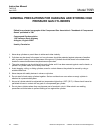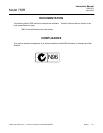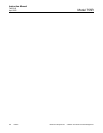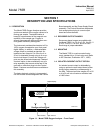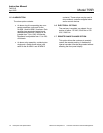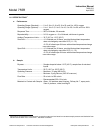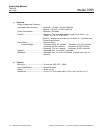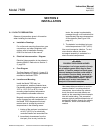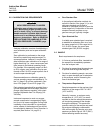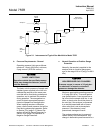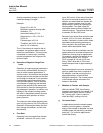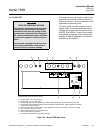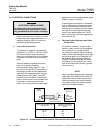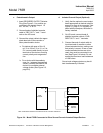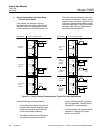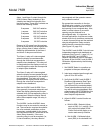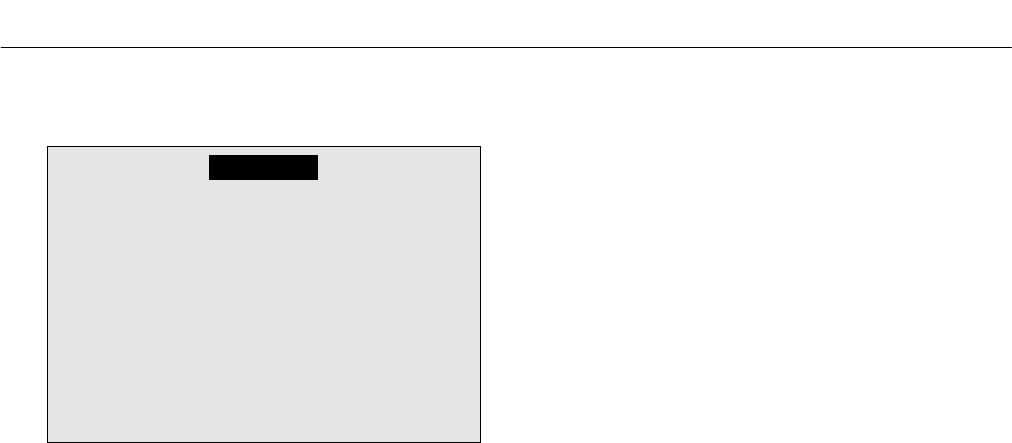
Instruction Manual
748213-S
April 2002
2-2 Installation Rosemount Analytical Inc. A Division of Emerson Process Management
Model 755R
2-2 CALIBRATION GAS REQUIREMENTS
WARNING
HIGH PRESSURE GAS CYLINDERS
Calibration gas cylinders are under pres-
sure. Mishandling of gas cylinders could
result in death, injury, or property damage.
Handle and store cylinders with extreme
caution and in accordance with the manu-
facturer’s instructions. Refer to GENERAL
PRECAUTIONS FOR HANDLING & STOR-
ING HIGH PRESSURE CYLINDERS, page
P-4.
Analyzer calibration consists of establishing a
zero calibration point and a span calibration
point.
Zero calibration is performed on the range
that will be used during sample analysis. In
some applications, however, it may be desir-
able to perform span calibration on a range of
higher sensitivity (i.e., more narrow span) and
then jumper to the desired operating range.
For example, if the operating range is to be 0
to 50% oxygen, span calibration may be per-
formed on the 0 to 25% range to permit use of
air as the span standard gas.
Recommendations on calibration gases for
various operating ranges are tabulated in Ta-
ble 3-1 (page 3-4) and are explained in Sec-
tions 2-2a (page 2-2) and 2-2b (page 2-2).
Each standard gas should be supplied from a
cylinder equipped with dual-stage, metal dia-
phragm type pressure regulator, with output
pressure adjustable from 0 to 50 psig (0 to
345 kPa).
Instrument response to most non-oxygen
sample components is comparatively slight,
but is not in all cases negligible. During initial
installation of an instrument in a given appli-
cation, effects of the background gas should
be calculated to determine if any correction is
required (See Section 3-4, page 3-1).
a. Zero Standard Gas
In the preferred calibration method, de-
scribed in Section 3-4a (page 3-1), a suit-
able zero standard gas is used to
establish a calibration point at or near the
lower range limit. Composition of the zero
standard normally requires an oxy-
gen-free zero gas, typically nitrogen.
b. Span Standard Gas
A suitable span standard gas is required
to establish a calibration point at or near
the upper range limit. If this range limit is
21% or 25% oxygen, the usual span
standard gas is air (20.93% oxygen).
2-3 SAMPLE
Basic requirements for sample are:
1. A 2-micron particulate filter, inserted into
the sample line immediately upstream
from the analyzer inlet.
2. Provision for pressurizing the sample gas
to provide flow through the analyzer.
3. Provision for selecting sample, zero stan-
dard, or span standard gas for admission
to the analyzer, and for measuring the
flow of the selected gas.
a. Temperature Requirements
Sample temperature at the analyzer inlet
should be in the range of 50°F to 150°F
(10°C to 66°C).
Normally, however, a maximum entry
temperature of 110°F (43°C) is recom-
mended so that the sample temperature
will rise during passage of the sample
through the analyzer. This precaution
prevents cooling of the sample and possi-
ble analyzer-damaging condensation.
With a thoroughly dry sample, entry tem-
perature can be as high as 150°F (66°C)
without affecting readout accuracy.



